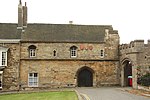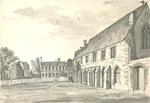Lincoln College, Lincolnshire
1932 establishments in EnglandAll pages needing cleanupEducation in Lincoln, EnglandEducational institutions established in 1932Further education colleges in Lincolnshire ... and 2 more
Use British English from July 2014West Lindsey District
Lincoln College is a predominantly further education college based in the City of Lincoln, England. The college's main site is on Monks Road (B1308), specifically to the north, and to the south of Lindum Hill (A15). It was formerly known as the Lincoln College of Technology and was one of the sites for North Lincolnshire College.
Excerpt from the Wikipedia article Lincoln College, Lincolnshire (License: CC BY-SA 3.0, Authors).Lincoln College, Lincolnshire
Monks Road, Lincoln New Boultham
Geographical coordinates (GPS) Address Phone number Website External links Nearby Places Show on map
Geographical coordinates (GPS)
| Latitude | Longitude |
|---|---|
| N 53.231 ° | E -0.5352 ° |
Address
Lincoln College
Monks Road
LN2 5HQ Lincoln, New Boultham
England, United Kingdom
Open on Google Maps










